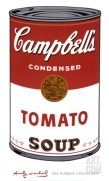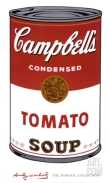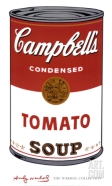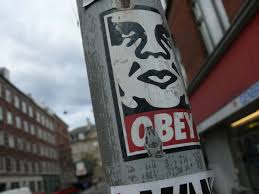This weekend I was walking in New York City and a graffiti covered street corner caught my eye. I noticed a faintly familiar image of my favorite brand of ginger ale. I had no doubt that this was a piece of advertising. However, as the brand is nowhere as prominent as Seagram’s or Coca Cola, at least a handful of passerby will perceive this as art or even an act of defiance.
The melding of consumer culture with art is not a new phenomenon. However, up until recently, it has served primarily as satire. Warhol’s reproduction of Campbell’s soup cans tested the constraints of low and high culture by mass-producing art in the very fashion we mass produce material goods. His iconic Campbell’s soup cans leave viewers unsure of how to discern art from the mundane, manufactured reproductions of the commercial realm.
Shepard Fairey’s 1989 OBEY street art project followed in a similar vein. The original message of his guerrilla art campaign was to poke fun at commercial culture and the subliminal, brainwashing effects of advertising. Fairey stated, “… obedience is the most valuable currency. People rarely consider how much power they sacrifice by blindly following a self serving corporation’s marketing agenda.”
Whether known or unbeknownst to Fairey, his earnest message would soon become the very corporate marketing agenda it was meant to critique. The anti-establishment origins of the OBEY graphic is now an iconic brand name sold on everything from hats and tee’s to magnets and mugs.
 OBEY Retail Space In London, UK
OBEY Retail Space In London, UK
Current culture more than ever has muddled the lines of art and advertising through a proliferation of mimetic imagery. The freedom and creative expression of art (especially guerilla) traditionally served to subvert the status quo and inspire questioning. Warhol and Fairey attempted to implant messages in their spoofs of advertising. Yet, art’s imitation of advertisement risks paradoxically perpetuating the system it wishes to disengage from. It seems modern advertising’s imitation of art is cashing in on this fallacy.
Let Me Know, Comment Below: What are your thoughts on art imitating advertising and advertising imitating art? Is distinguishing the two necessary or even possible?





